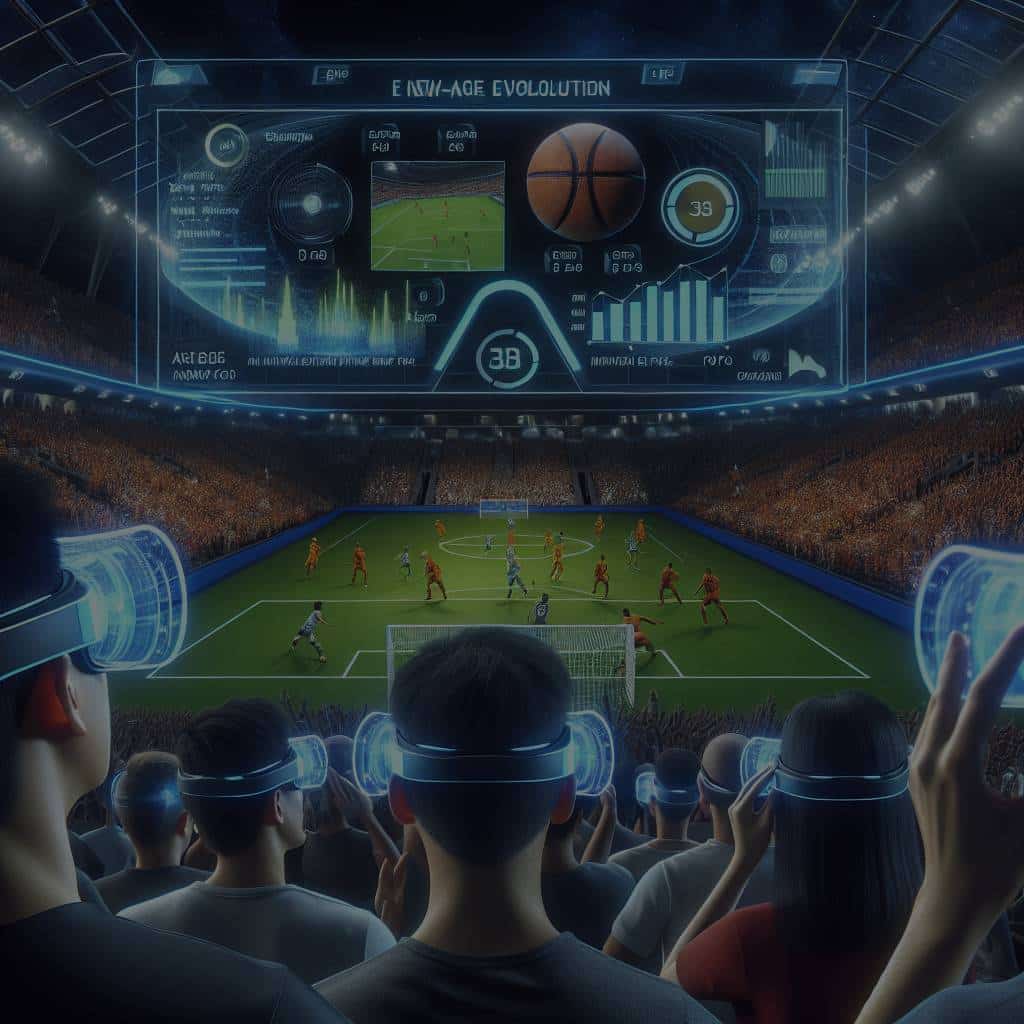How Are Augmented Reality Glasses Changing the Way We Experience Sports Events?

The world of sports is no stranger to technology. From high-tech gear used by athletes to digital scoreboards and instant replays, technology has been instrumental in transforming the game. But, the latest innovations in augmented and virtual reality are revolutionizing not just the way sports are played, but also how we, the fans, experience them. Augmented reality glasses in particular, are at the forefront of this technology-driven transformation in the sports industry. Let’s dig deeper into how this technology is reshaping our sports experiences.
AR Glasses: A New Reality in Sports Viewing
Augmented reality (AR) technology overlays virtual content onto the real world, enhancing your reality with additional digital information. AR glasses bring this technology right in front of your eyes, providing an immersive and interactive experience like never before.
Also to read : What’s the Impact of 5D Data Storage Technology on Preserving Digital Information?
AR glasses are not a new invention, but their application in sports viewing is fairly recent. These high-tech glasses can overlay real-time stats over live games, provide instant replays, and even enhance the live action with 3D graphics.
For instance, imagine watching a football match with AR glasses. You could see the players’ stats hovering next to them, the trajectory of the ball, offside lines, and much more. All this can make the game more engaging and exciting, even for the casual viewers.
Have you seen this : How to Implement Zero-Waste Strategies in Your Daily Life?
Training Athletes with AR Glasses
Apart from enhancing fans’ experience, AR glasses are also changing the way athletes train. This immersive technology enables players to experience real game situations during training, helping them improve their performance.
AR glasses can simulate various game scenarios that an athlete might encounter during a live match. These simulations can be customized according to the player’s needs, allowing them to practice specific skills or strategies.
For example, a basketball player can use AR glasses to simulate shooting hoops with a virtual defender. This can help the player improve their shooting accuracy, even when under pressure. Similarly, a goalie in a soccer game can use this technology to practice defending against virtual penalty kicks.
AR Glasses in Sports Marketing
The potential of AR glasses goes beyond just viewing and training. They are becoming a promising marketing tool in the world of sports. From promoting events to engaging fans, AR glasses are opening new avenues for sports marketing.
With AR glasses, sports marketers can create immersive promotional content that goes beyond traditional advertisements. For example, a promotional video for a sports event can be turned into an interactive AR experience where fans can virtually interact with their favourite players.
Furthermore, AR glasses can be used during live sports events to provide interactive experiences to the fans. These experiences can include virtual meet and greets with players, virtual tours of the stadium, and much more.
Augmented Reality Glasses: The Future of Sports?
While AR glasses are already changing the way we experience sports, their potential is far from fully realized. The future of sports with AR glasses can be even more exciting.
We can expect to see more advanced and personalized AR experiences in the future. For example, you might be able to choose your own camera angles during a live game, or even walk around the stadium virtually while watching the game from your living room.
Athletes too can benefit from more advanced AR training tools. They could train against virtual opponents who mimic the strategies and techniques of their real competitors. This can allow athletes to prepare better for their matches.
In conclusion, AR glasses are indeed revolutionizing the sports industry. They are enhancing our sports viewing experience, aiding in athlete training, and opening new possibilities in sports marketing. However, this is just the beginning. With advancements in technology, we can expect augmented reality glasses to take our sports experiences to even greater heights in the future.
The Role of AR Glasses in Fan Engagement and Social Media Interaction
Fan engagement has always been a critical aspect of sports events. The electrifying atmosphere in stadiums, the roar of the crowd, the thrill of the game – these are elements that make sports events an unforgettable experience. But with augmented reality glasses, the fan experience is set to reach new heights by adding an interactive layer to it.
AR glasses can provide real-time updates and stats, allowing fans to be more involved in the games. Imagine being at a live game and being able to access player statistics, game history, and even predictive analysis, all through your glasses. You could potentially see player heat maps, foul counts, and other key data points. This enhances not just the viewing experience but also the understanding and appreciation of the strategy and skills involved in the game.
Beyond just stats and updates, AR glasses can also offer unique features to boost fan engagement. For instance, they could offer 3D replays from any angle, a feature that would give fans a whole new perspective on crucial game moments.
Moreover, AR glasses can significantly enhance the social media experience for sports fans. With social media platforms integrated into the glasses, fans could share their viewpoint instantly, or even live stream their perspective of the game. This could lead to a whole new level of interaction between fans, athletes, and even sports teams. The marriage of augmented reality and social media in the sports industry could completely revolutionize how fans experience sporting events.
The Impact of AR Glasses on Media and Entertainment Industry
The introduction of augmented reality technology in sports is also a game-changer for the media and entertainment industry. As AR glasses enhance the viewing experience of sports events, they can also transform how media companies broadcast these events.
With AR glasses, media companies can offer more immersive experiences for viewers at home. They can provide real-time stats, instant replays, and even 3D graphics overlaid on the live game, significantly enhancing the viewing experience.
Additionally, AR glasses open up new opportunities for creative storytelling in sports broadcasting. With access to real-time data and the ability to overlay virtual content, broadcasters can tell more engaging and interactive stories. For instance, they could highlight a player’s performance during a game using visual aids or delve into a team’s strategy using augmented reality graphics.
Furthermore, AR glasses can also provide new revenue streams for media companies. They can offer premium AR features for viewers, such as exclusive camera angles, player interviews, or behind-the-scenes content. This can enhance viewership and engagement, ultimately boosting revenue for broadcasters.
In Conclusion: AR Glasses – A Revolutionary Game Changer
Augmented reality glasses are creating ripples across the sports industry. Whether it’s enhancing fan engagement or transforming sports broadcasting, these high-tech glasses are revolutionizing how we experience sports events.
By providing real-time data, offering interactive and immersive experiences, and opening new marketing avenues, AR glasses are proving to be a game changer. They are not only enhancing the viewer experience but also changing the way athletes train and perform.
In the near future, we can expect even more advanced AR experiences. Imagine choosing your viewpoint during a live game, interacting with your favorite athletes virtually, or even feeling the thrill of the game as if you were physically present in the stadium. The possibilities are endless, and it all points to an exciting future for sports enthusiasts.
In essence, the integration of augmented reality in the sports industry is a testament to the endless opportunities that technology can bring. As we look forward, one thing is clear – AR glasses are set to take the sports world by storm, and this is only the beginning.
